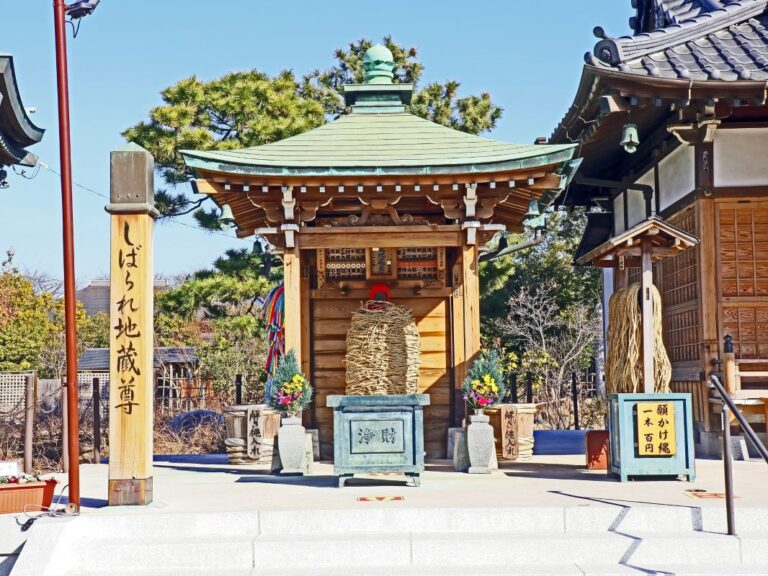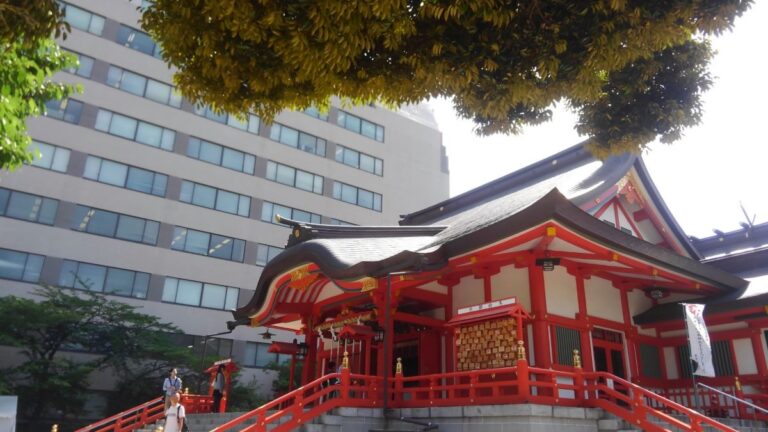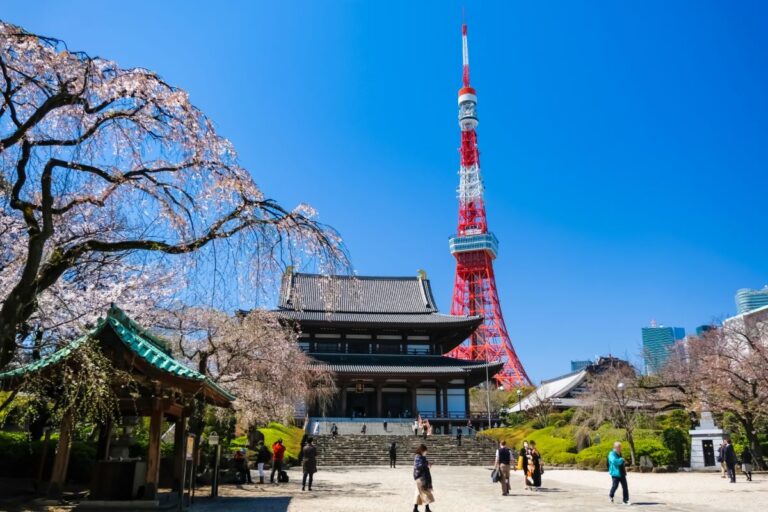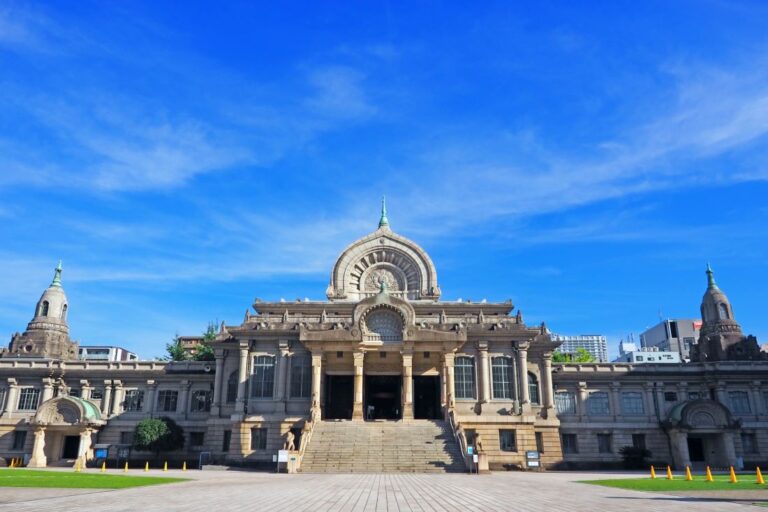Located in Nogizaka, Akasaka district, the Nogi-Jinja Shrine is a small but beautiful Shinto shrine dedicated to the memory of the Japanese army general Nogi Maresuke and his wife. They committed ritual suicide on the day of Emperor Meiji’s funeral.
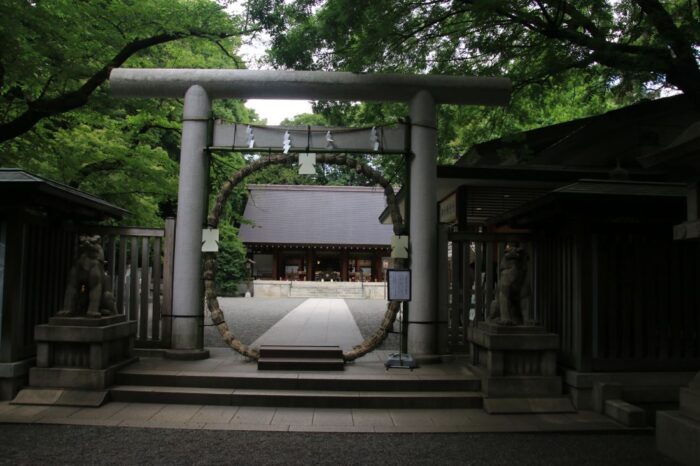
The shrine is free to enter and open daily from early morning to 6 pm. You can also receive the ritual of prayer -Gokigan- to fulfill your wishes for 7,000 yen. The shrine is a one-minute walk from Nogizaka Station on the Tokyo Metro Chiyoda Line, exit 1. It is also near other popular sights such as Roppongi Hills and Tokyo Midtown.
The architecture of the shrine is simple yet beautiful, with a small garden and a torii gate at the entrance. The shrine’s interior features a wooden structure with traditional Japanese design elements.

The atmosphere is serene, and you can hear the sound of the wind chimes and the birds singing.
History

When you visit Nogi-Jinja Shrine, you are stepping into a place with a rich and fascinating history. The shrine was established on November 1, 1923, and is dedicated to General Nogi Maresuke and his wife, Nogi Shizuko. The couple committed ritual suicide on the day of Emperor Meiji’s funeral, as a sign of infinite loyalty. The shrine was built within their residence, which still stands next to the shrine today.
The Tokyo Mayor, Baron Yoshio Sakatani, took the initiative to organize the Chūō Nogi Kai (Central Nogi Association) to build a shrine to the couple within their residence. The shrine was destroyed in the Tokyo air raids of 1945, but was rebuilt in 1957.
The main building of General Nogi’s residence, which was built in 1902, is a spartan wooden structure with a tiled roof. It was modeled on the French military barracks that greatly impressed the general during his two years in Germany.
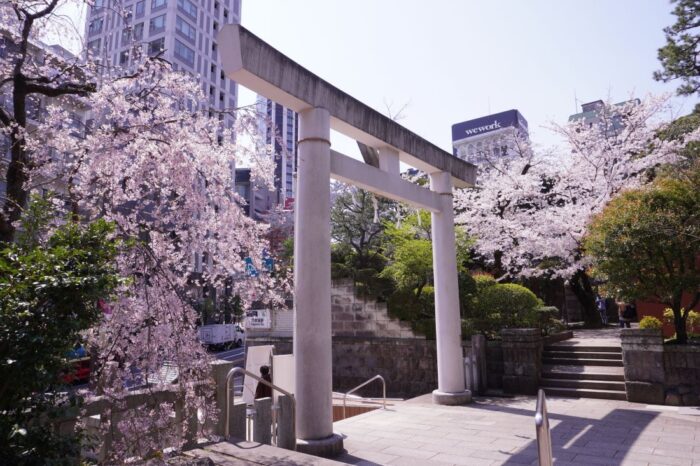
Today, Nogi-Jinja Shrine is a popular destination and is a peaceful and serene place, surrounded by trees and greenery. As you walk through the grounds, you can’t help but feel a sense of reverence for the history that has taken place here. It is a place where you can reflect on the sacrifices that have been made in the name of loyalty and honor.
Architecture

As you enter the Nogi-Jinja Shrine, you will immediately notice the striking contrast between the traditional Japanese architecture and the Western-style building within the compound. The Western-style building was constructed during the Meiji period and is a rare example of Western architecture in Japan at the time.
The shrine itself is a beautiful example of traditional Japanese architecture, with its wooden beams and intricate carvings. The main hall, or honden, is where the kami, or spirits, are enshrined. The honden is surrounded by a courtyard, which is lined with torii gates that lead to smaller shrines within the compound.
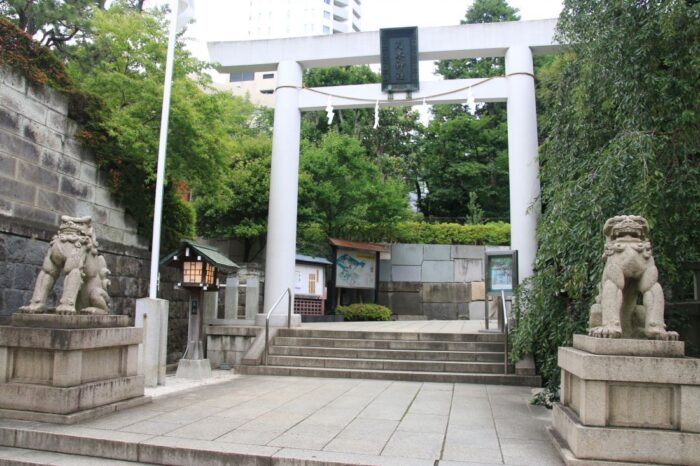
One of the most interesting features of the Nogi-Jinja Shrine is the museum within the Western-style building. The museum houses artifacts related to General Nogi and his wife, including their personal belongings, letters, and photographs. The museum also features displays on the history of the shrine and the Meiji period.
Significance
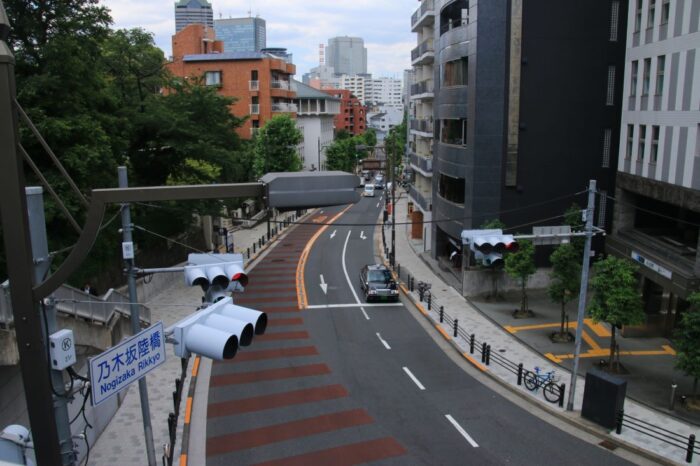
The shrine is also of note because it is in the heart of Tokyo, near Roppongi, one of the city’s most vibrant and cosmopolitan neighborhoods. The contrast between the serene atmosphere of the shrine and the bustling city around it is striking and adds to the shrine’s unique charm.
Another reason why Nogi-Jinja Shrine is significant is that it lets you to participate in traditional Shinto rituals and ceremonies. You can receive the ritual of prayer, known as Gokigan, to fulfill their wishes for a fee of 7,000 yen. This ritual is a unique and authentic way to experience Japanese culture and spirituality.
Overall, Nogi-Jinja Shrine should be on your to-do list for anyone interested in Japanese history, culture, and spirituality. Its unique location, historical significance, and traditional rituals make it a fascinating and enriching experience that you won’t soon forget.
Festivals and Events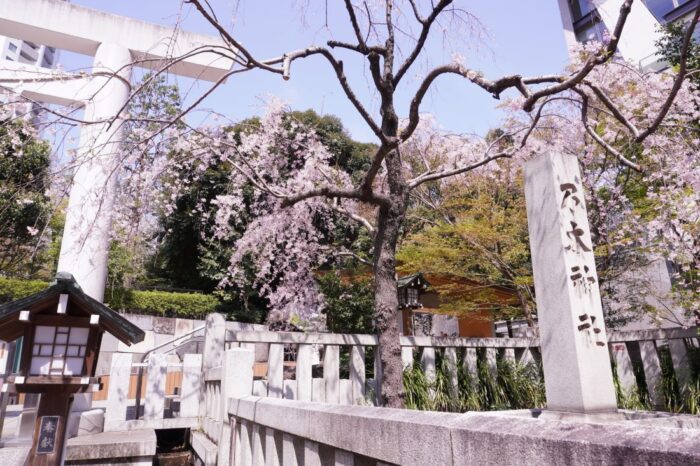
The shrine hosts events throughout the year, including:
- New Year’s Day: On January 1st, the shrine is open all day for hatsumode, the first shrine visit of the year. This is a popular event in Japan, and many people come to pray for good luck and fortune in the coming year.
- Spring Festival: Held in April, the spring festival features traditional music and dance performances, as well as food stalls selling local specialties.
- Autumn Festival: The autumn festival takes place in November and includes a parade of mikoshi (portable shrines) through the streets around the shrine.
- Shichi-Go-San: On November 15th, families bring their 3 and 7-year-old daughters and 5-year-old sons to the shrine to pray for their health and growth.
Visiting Information
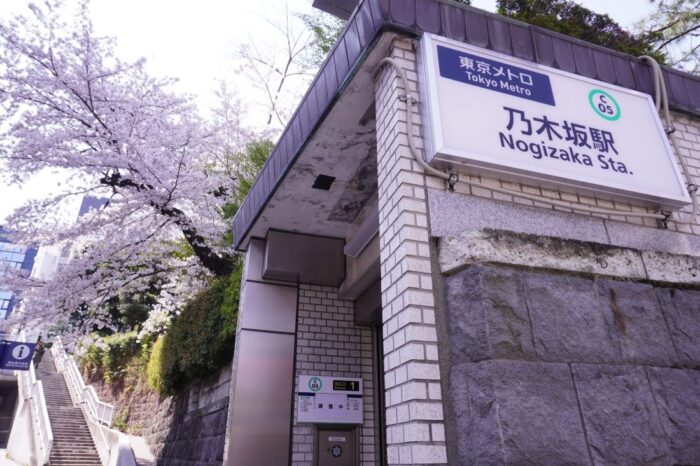
If you’re planning to visit Nogi-Jinja Shrine, here’s some information that might come in handy:
Location and Access
The shrine is in the Nogizaka area of Tokyo’s Akasaka district, near Roppongi. It’s easily accessible via public transportation, with the Nogizaka Station on the Tokyo Metro Chiyoda Line just a 30-second walk away from Exit 1. You can also take a 23-minute walk from Roppongi Hills MORI ART MUSEUM or a 15-minute walk from Tokyo Midtown or the 21_21 DESIGN SIGHT Building.
Opening Times and Admission
The shrine is open daily, from early morning until 6:00 PM. Admission is free, so you don’t have to worry about any entrance fees. If you want to receive the ritual of prayer called Gokigan to fulfill your wishes, it costs 7,000 yen.
What to Wear
As with any religious site, it’s important to dress appropriately when visiting Nogi-Jinja Shrine. Avoid wearing revealing clothing, and make sure your shoulders and knees are covered. It’s also a good idea to wear comfortable shoes, as you’ll be walking around the shrine grounds.

